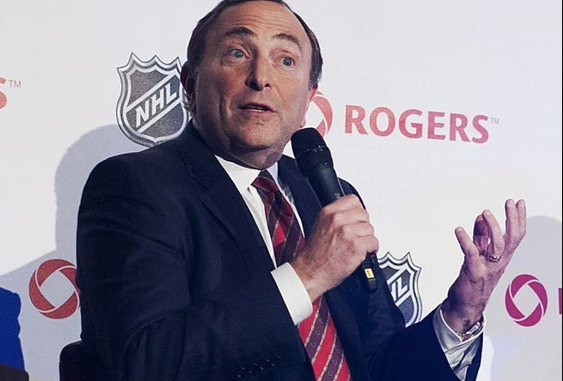
The biggest casualty of Rogers Sportsnet’s costly 12-year hockey deal is the Canadian fan.
This isn’t what hockey fans wanted or expected.
Today’s fans are more knowledgeable, tech-savvy, and discerning than ever before, yet Sportsnet delivers hockey coverage that feels uninspired and cost-conscious. Instead of elevating the experience, it has reduced the once-iconic Hockey Night in Canada—the gold standard of Canadian sports broadcasting—to just another TV program.
And in the grand scheme of things, NHL commissioner Gary Bettman likely isn’t too concerned.
He isn’t overly concerned with public opinion on the lackluster coverage Sportsnet has provided for hockey over the past decade.
Typically, Bettman is a master at growing the NHL’s business, rarely making a poor decision or a bad deal.
But this 12-year, $11-billion agreement—initially met with skepticism, even dismissed as an April Fool’s joke when reported by Sportico on Monday—is nothing short of a slap in the face to every passionate hockey fan in this hockey-obsessed nation.
Reports suggest the deal is valued at $11 billion, but two sources indicated Tuesday that the actual figure may be even higher.
Twelve years ago, Rogers Sportsnet stunned the hockey world by securing exclusive NHL broadcasting rights in Canada—an unexpected move that caught everyone off guard.
Initially, there was anticipation about what they would bring to the table. Yet, more than a decade later, there’s been little of real significance.
Instead, fans have watched a product either stagnate or decline, especially when compared to the innovative coverage offered by other networks, such as TNT in the U.S. and TSN in Canada.
How is it that TNT, based in Atlanta—a city not traditionally associated with hockey—has managed to surpass anything Sportsnet has produced, despite only recently entering the hockey broadcast space?
For years, I held out hope that Sportsnet would have a breakthrough, that they would deliver something special. Instead, all that has happened is cut after cut, gradually diminishing the quality of the product.
The departures of big names like Don Cherry, Glenn Healy, George Stroumboulopoulos, Jeff Marek, and Christine Simpson are well known. But behind the scenes, the losses have been just as significant. Producers and directors who once ensured high-quality coverage are gone. Industry veterans like Sherali Najak are gone. Voices of dissent are largely gone. Anything deemed too expensive? Gone.
When Sportsnet first took over hockey coverage, there was an expectation they would push boundaries. In one of their early games featuring Sidney Crosby in Toronto, they pulled out all the stops—deploying a rail camera, a dedicated Crosby cam, a bench cam, and an isolation cam, in addition to the standard game cameras. It was an ambitious and exciting approach.
The very next day, those cameras were removed. The cost was deemed too high. While TNT and ESPN broadcasts routinely feature 12 to 15 cameras, Sportsnet has often operated with as few as three on the road.
All of this is happening at a time when Canadian NHL teams are on the rise. With legitimate Stanley Cup hopes in Toronto, Edmonton, and Winnipeg, and surging optimism in Ottawa and Montreal, the Canadian hockey landscape has never been more electrifying. Yet, the network tasked with covering the game continues to lag behind.

Leave a Reply